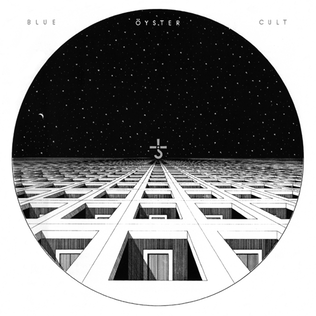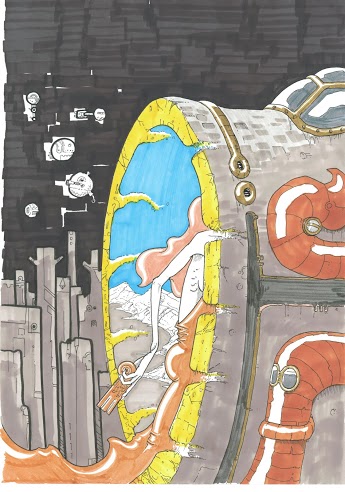I haven't been blogging as much as I'd like, so I put out a call for questions.
Evan asked me
"How do I get into Dark Heresy stuff if I normally find 40k impenetrable?"
Well, the short answer is to go read some Dan Abnett - the
Eisenhorn and
Ravenor trilogies. Yes, that's a big chunk of text - but they're good reads. Not just "good licensed fiction reads," but actually good reads in their own right. And if you're like me, you'll read them and instantly go "
Crap! I really want to be playing in a Dark Heresy game right now!" (#121). Hell, just reading the Ravenor
prologue does that for me.
But that's a mediocre response.
Here's my take on Dark Heresy: it's 40k, but it's not about 40k. Just like Warhammer Fantasy takes the Warhammer tabletop minis game and diverges into its own universe, so does Dark Heresy diverge from the 40k tabletop game. Frankly, I suspect the less chance there is for a single damn Space Marine to show up the better your Dark Heresy game is going to be. (Also note that this is all
my take on the concept of Dark Heresy, not necessarily one that's borne out by the actual rulebooks or published background or whatever.)
Warhammer Fantasy has an implicit setup of "average folks making their way in a crapsack world while dealing with the hidden spectre of Chaos creeping out to gnaw at the roots of society, Ratatosk-like" Obviously individual campaigns can diverge from this, but it
is an assumed backdrop. Dark Heresy isn't too far off - except instead of average folks, the assumption is that you're playing agents of the Inquisition, and the assumption is somewhat less sandboxy than WFRP can be.
The existing games that I think are most valuable for getting into the Dark Heresy frame of mind are
Delta Green and
Night's Black Agents.
In both DG and NBA, players are tasked with uncovering what's
really going on. They're games with a high focus on tradecraft, investigation, and ambiguity. Sure you have the ooky monsters who are the baddies (Mi-Go and other Mythos creatures, vampires) but dealing with the mundane threats of exposure, corruption, betrayal, and secrets form a major component as well. Dark Heresy fits the same paradigm - you're working your way through layers of conspiracy and skullduggery, trying to trace these things back to their source, while attempting to avoid being found out by the opposition or burned by your bosses.
In all of these games, the players have access to a great deal of power, with a catch involved. In Delta Green, the PCs (usually) have the apparent weight of the federal government...counterbalanced by the fact that they're operating rogue, without
actual federal auspices, and therefore have to remain covert. In NBA, players are frickin' movie superspies with all that entails, but AFAIK don't necessarily have official backing (and/or have a strong likelihood that the official backing is actually compromised by vampires).
I tend to see Dark Heresy as taking the option that's most advantageous for the PCs from both of these, which is not necessarily a bad thing. The PCs are pitched as being strongly competent agents - perhaps not the superspies of NBA but not too far removed from them either. And unlike the doomed agents of Delta Green, Dark Heresy PCs usually
do have the full weight of the Inquisition behind them, assuming that their relationship with their Inquisitor isn't frayed, or that their Inquisitor isn't actually involved in one of the conspiracies themselves...
Does this large throw weight decrease the interesting options for the players? I don't think so. As the scope of player power expands in Dark Heresy, so does the scope of both the threats
and the universe. The conspiracies they're fighting, both supernatural and mundane, have their tendrils in just about everything. And again, these tendrils can be of either the supernatural or the mundane sort.
Also worth reading when thinking about Dark Heresy: Zak S's "
Zero Dark 29, 28, 27...", which discusses the difference in paradigms between Night's Black Agents and Call of Cthulhu. Check out the bit about revelations and showdowns, reading (in part):
Games relying mostly on Showdowns want the world to feel connected and, ultimately, knowable--everything is about you and your big fight coming up. Games relying on Revelation want the world to feel abstract and unknowable--everything beyond you is a mystery in the great beyond.
In the revelation story, the players are small and the world is large. In the showdown story, the players are large and the threat is large and the world is a backdrop.
Dark Heresy is mostly focused on showdowns, with the focus being on hostile conspiracies, but I believe that those showdowns work best when leading to a revelation - that sort of peeling back the curtain and seeing that despite all their power and influence and clout the PCs are still just tiny smidges against the unknowable.
Other must-reads for Dark Heresy play are Chris's series on constructing sandbox networks (
here,
here,
here) Robert's discussion of a campaign frame for Marvel '78 (
here), and Evan's own related
Superheroes Year One work - obviously you'll have to do some tweaking here to get something appropriate for Dark Heresy rather than superheroes. I view those last two as the "main phase" of a Dark Heresy campaign, after an initial startup seed -- the main focus of play is trying to strike a balance between thwarting the hostile actions of conspiracies within a bounded area (planet? subsector?) and conducting the investigations to root them out.
 |
"Pontifex Maximus"
John Blanche |
So why the hell would you want to play Dark Heresy?
You
want to play this if you're looking to strike a middle ground,
gameplay-wise and tonally, between Delta Green and WFRP. Both NBA and
Delta Green take a strong focus on the psychological well-being of the
agents and seeing how they spiral into depression and sadness and lose
their bonds with their family members and stuff. That's all well and
good, but it's not what I want from my general gaming. Sometimes you want to be able to fearlessly blast beings of Chaos with a plasma pistol (and have a minuscule chance of taking them down), instead of your character heading straight to PTSD-ville.
(As
a side note: Dark Heresy and the wide-open nature of the 40k setting means that you can do things like going from a
big ol' Blade Runner/Coruscant cityscape to a Mad Max planet to
basically anything that you might see in Traveller, and it'll all fit
just fine. Plus mutants, zombies, and the undead, which I suspect might
be a selling point to anyone who might write about a
Galaxy of Fear.)
Dark Heresy provides you a venue for playing through and unraveling fantastic espionage and conspiracy in a high-powered environment (allowing for genre shifts when you want a change of pace). Depending on how high you want to ramp up some of the 40k elements, it can have paranoia,
PARANOIA, or both.
So how to get into Dark Heresy? Well, you could read Eisenhorn or Ravenor. You could stick Traveller, PARANOIA, WFRP, Delta Green and Night's Black Agents into a blender. You could look at a bunch of John Blanche art, read Dune and Tinker Tailor Soldier Spy and 2000 AD, watch Dredd...
The list stretches on.










